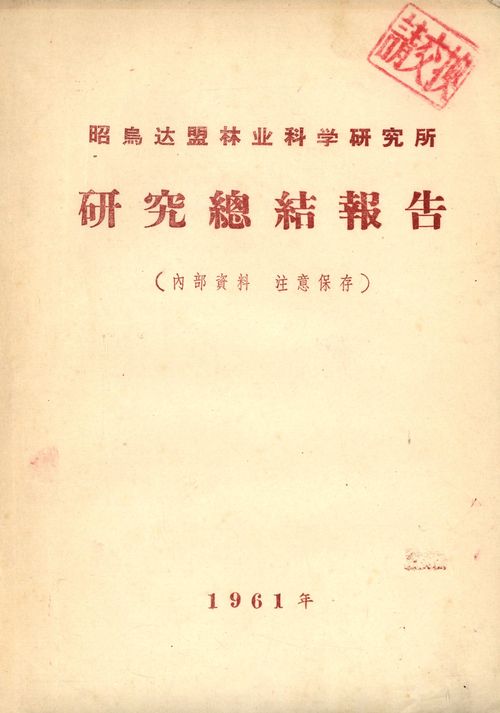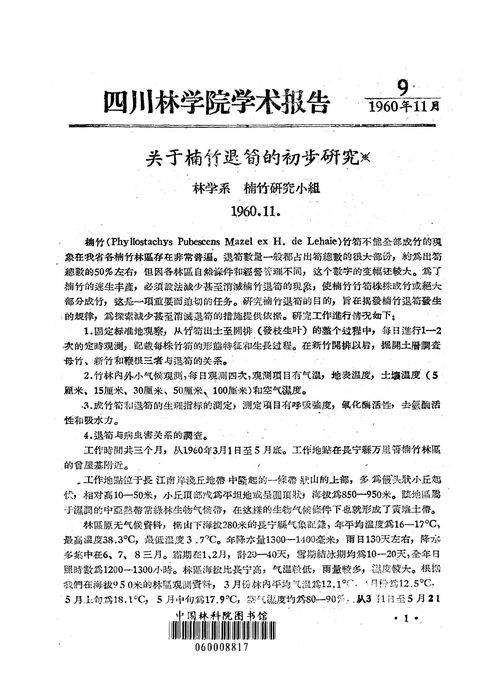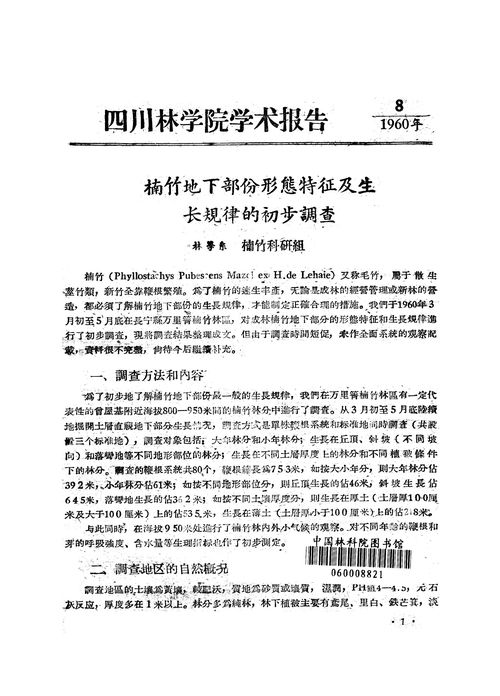
低效乔木林改为竹木混交林试验初报
编号
lyqk006546


中文标题
低效乔木林改为竹木混交林试验初报


作者单位
贵州省湄潭县林业局 贵州湄潭 564100


期刊名称
世界竹藤通讯


年份
2018


卷号
16


期号
2


栏目名称
学术园地


中文摘要
大面积的低效林严重阻碍林业可持续发展。为探索将低效乔木林改为竹木混交林的适宜条件和措施,通过在低效乔木林中栽植楠竹,研究了林地坡向、林分郁闭度、林地清理方式、竹苗类型以及造竹密度对楠竹生长的影响。结果表明:最适宜楠竹生长的低效林郁闭度为0.3,采取带状劈割后,栽植楠竹原丛苗,造竹密度500丛/hm2;营建的林分第4年郁闭成林,第6年进入收益期,第7年新竹平均胸径达6.9 cm,竹子覆盖度为60%,竹木混交林状态基本形成。林地坡向对楠竹生长无影响,阳坡和阴坡均适宜于楠竹生长。


关键词
低效乔木林
林分改造
楠竹
郁闭度
造竹密度
林地清理方式


英文标题
Preliminary Study of Low-efficiency Arbor Forest Improvement into Bamboo-Arbor Mixed Forest


作者英文名
Zhang Daogui, Huang Jiyou, Tian Maohui, Xu Jun, He Tao


单位英文名
Meitan Forestry Bureau,Meitan 564100,Guizhou,China


英文摘要
Large-area low-efficiency forest has seriously impeded the sustainable forestry development. To explore the appropriate conditions and measures of improving low-efficiency arbor forest into bamboo-arbor mixed forest, the study analyzed the impacts of slope direction, stand canopy, land clearing mode, types of bamboo seedlings and afforestation density on the growth of Phyllostachys pubescens by planting this bamboo species in low-efficiency arbor forest. The result showed that the canopy of forests that were most suitable for Ph. Pubescens growth is 0.30, and after the splitting bush, the original clump-seedlings were planted with the density at 500 /ha; the stand went mature at the 4th year and entered the harvesting period at the 6th year, and when the 7th year came, the new bamboo culms could reach the average diameter of 6.9 cm, and the bamboo coverage at 60%, which marked the formation of bamboo-arbor mixed forest. The slope direction had no impact on Ph. pubescens growth, and both sunny slope and shady slope were all suitable for its growth.


英文关键词
low-efficiency arbor forest;forest improvement;Phyllostachys pubescens;canopy;afforestation density;woodland clearing mode


起始页码
1


截止页码
6,24


作者简介
张道贵(1965-),男,高级工程师,研究方向为森林培育。E-mail:546375718@qq.com。


通讯作者介绍
黄吉友(1968-),男,助理工程师,研究方向为森林培育。E-mail:2876439563@qq.com。


E-mail
2876439563@qq.com


DOI
10.13640/j.cnki.wbr.2018.02.001


参考文献
[1] 邓东周, 张小平, 鄢武先, 等. 低效林改造研究综述[J]. 世界林业研究, 2010, 23(4):65-69.
[2] 谭方友, 吴德辉. 贵州省竹产业现状与发展对策[J]. 经济林研究, 2008, 26(3):127-130.
[3] 陈存及. 竹木混交林的科学经营[J]. 竹子研究汇刊, 2001, 20(1):5-9.
[4] 周亚琦, 董杰, 官凤英, 等. 竹阔混交林研究进展与展望[J]. 林业资源管理, 2016(3):145-149.
[5] 林振清. 竹阔混交林毛竹生产力与经营效益的研究[J]. 竹子研究汇刊, 2000, 19(4):42-45, 55.
[6] 洪伟, 胡喜生, 吴承祯, 等. 福建省毛竹混交林群落结构特征比较[J]. 植物资源与环境学报, 2004, 13(1):37-42.
[7] 黄秀美. 杉木毛竹混交造林效果研究[J]. 江西农业大学学报, 2000, 22(1):41-46.
[8] 湄潭县综合农业区划编写组. 湄潭县综合农业区划[M]. 贵阳:贵州人民出版社, 1992.
[9] 李兴伟, 王裕霞, 古定球, 等. 楠竹实生苗选育的初步研究[J]. 广东林业科技, 2000, 16(4):14-18.
[10] 朱勇, 张文勤, 吴以专. 大面积毛竹造林的生产经验[J]. 竹子研究汇刊, 2005, 24(2):33-36.
[11] 王世民, 徐大同, 李昌栋, 等. 实生毛竹林生长现状的调查[J]. 竹子研究汇刊, 1994, 13(3):49-52.
[12] 廖军, 张卫栋, 薛建辉, 等. 竹阔混交林混交类型的综合评价[J]. 江西农业大学学报(自然科学版), 2002, 24(3):346-349.
[13] 顾琪, 程小飞, 黄伟亮, 等. 上阔下竹混交经营对楠竹生产力的影响[J]. 竹子研究汇刊, 2015, 34(3):30-34.
[14] 马祥庆, 杨玉盛, 林开敏, 等. 不同林地清理方式对杉木人工林生态系统的影响[J]. 生态学报, 1997, 17(2):176-183.
[15] 杨国群. 毛竹造林地不同清理方式对造林效果的影响[J]. 福建林业科技, 2012, 39(4):34-36.
[16] 王大来. 湘南山区5个立地因子对楠竹生长的影响[J]. 中国农学通报, 2010, 26(6):101-103.
[17] 税小红, 吴秋浔. 楠竹播种苗自然丛群状配置造林试验[J]. 四川林业科技, 2008, 29(3):76-77.


PDF全文
浏览全文


-
相关记录
更多
- 城市公园绿地植被群落郁闭度与三维绿量对夏季降温增湿效应的影响 2024
- 杉木林郁闭度对林下金佛山方竹生长的影响 2023
- 广西资源县林下种植箬竹试验 2023
- 贵州赤水楠竹林菌笋复合经营技术 2022
- 郁闭度对无瓣海桑人工林下3种红树幼树生长影响 2021
- 楠竹快速成林丰产培育关键技术 2018
 打印
打印







